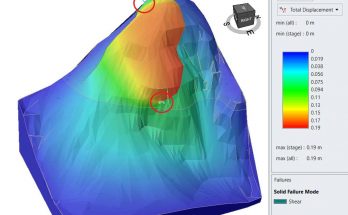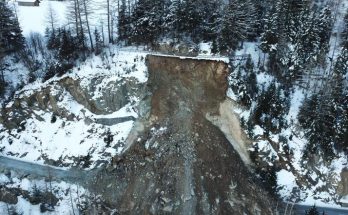Emmanuel Wick
Supervisors: Prof. Dr. Michel Jaboyedoff, Valérie Baumann
The International Road 7 crosses Argentina from East to West, linking Buenos Aires to the Chile border. While crossing the Andes Cordillera, it puts itself at numerous natural risks, such as avalanches, rock falls and debris flow.
This study will be part of a larger one that will eventually characterize the hazard along the mountainous portion of this road. In this study we will focus on the catchment of the debris flow that swept a car away in January 2005. All of this happened in the northern part of the Guido’s curve, between Potrerillos and Uspallata, in the Mendoza Province.
The Guido debris flow’s catchment measures 4.7 km2 and is constituted of three main torrents that meet a few meters ahead of the International Road. Each one of these torrents started during the evening of January 11, 2005, reaching the road apparently at a very short interval of time. Three years later, signs of them are still perfectly visible, frozen by the arid climate of the region.
The study has been mainly realized from satellite Quickbird imagery and field data collected during a three-week field survey.
It has been established from meteorological data, particle size and mineralogy the conditions that lead to a start of debris flow in this catchment. It depends on strong rainfall combined with numerous material mainly constituted of sands produced by the erosion of a very altered granite. The debris flows have been classified as being a granular matrix that has a collisional-frictional behavior.
From various criteria and with the help of a digital elevation model, it has been shown that the starts happen mainly at the top of the catchment.
Various calculations of volumes, peak discharges and velocities have been realized from geomorphologic methods, empiric formulas and from the analysis of satellite imagery. It appears that an important potential of volume that can be mobilized exists, especially for the longest torrent. A new event could move more than 65.000 m3 of material; the last event reached an estimated velocity of approximately 7 m/s.
A detailed geomorphologic study gave the opportunity to emphasize the activities of anthropogenic origin that led to the deviation of the torrents towards a more adequate place for the construction of a mitigation work. Identically three propagation scenarios illustrating the vulnerability of the road have been proposed.
The present state of the work where underneath the debris flows must cross is not optimum: it is underdimensioned and the last event deposits have not been completely evacuated. The road has been considered as vulnerable even in case of much lighter debris flows.
The results gave the opportunity to put forward several realistic protection measures for the Argentinean context in descending order of importance. They are simple and should be feasible at reasonable cost.



